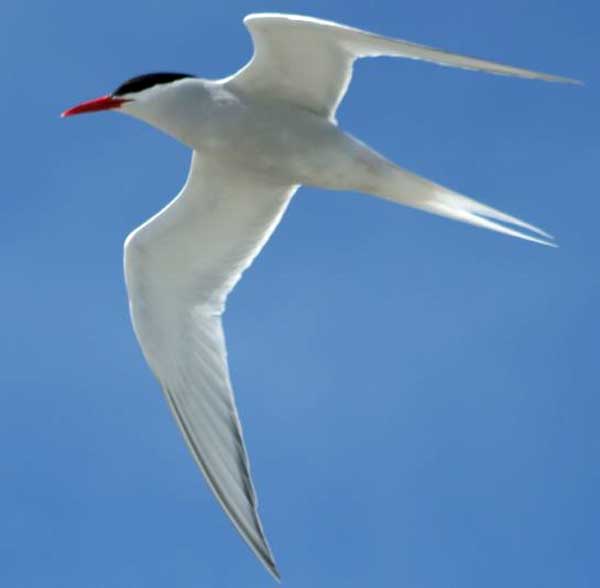
Sterna hirundinacea (*)
Superregnum: Eukaryota
Cladus: Unikonta
Cladus: Opisthokonta
Cladus: Holozoa
Regnum: Animalia
Subregnum: Eumetazoa
Cladus: Bilateria
Cladus: Nephrozoa
Superphylum: Deuterostomia
Phylum: Chordata
Subphylum: Vertebrata
Infraphylum: Gnathostomata
Megaclassis: Osteichthyes
Cladus: Sarcopterygii
Cladus: Rhipidistia
Cladus: Tetrapodomorpha
Cladus: Eotetrapodiformes
Cladus: Elpistostegalia
Superclassis: Tetrapoda
Cladus: Reptiliomorpha
Cladus: Amniota
Classis: Reptilia
Cladus: Eureptilia
Cladus: Romeriida
Subclassis: Diapsida
Cladus: Sauria
Infraclassis: Archosauromorpha
Cladus: Crurotarsi
Divisio: Archosauria
Cladus: Avemetatarsalia
Cladus: Ornithodira
Subtaxon: Dinosauromorpha
Cladus: Dinosauriformes
Cladus: Dracohors
Cladus: Dinosauria
Ordo: Saurischia
Cladus: Eusaurischia
Subordo: Theropoda
Cladus: Neotheropoda
Cladus: Averostra
Cladus: Tetanurae
Cladus: Avetheropoda
Cladus: Coelurosauria
Cladus: Tyrannoraptora
Cladus: Maniraptoromorpha
Cladus: Maniraptoriformes
Cladus: Maniraptora
Cladus: Pennaraptora
Cladus: Paraves
Cladus: Eumaniraptora
Cladus: Avialae
Infraclassis: Aves
Cladus: Euavialae
Cladus: Avebrevicauda
Cladus: Pygostylia
Cladus: Ornithothoraces
Cladus: Ornithuromorpha
Cladus: Carinatae
Parvclassis: Neornithes
Cohors: Neognathae
Cladus: Neoaves
Ordo: Charadriiformes
Subordo: Lari
Familia: Laridae
Subfamilia: Sterninae
Genus: Sterna
Species: Sterna hirundinacea
Name
Sterna hirundinacea Lesson, 1831
Type locality
Santa Catarina, Brazil.
References
Lesson, R.P. 1830–1831. Traité d'ornithologie, ou, Tableau méthodique des ordres, sous-ordres, familles, tribus, genres, sous-genres et races d'oiseaux : ouvrage entièrement neuf, formant le catalogue le plus complet des espèces réunies dans les collections publiques de la France. F. G. Levrault, Paris. Vol. 1: pp. i–xxxii, 1–659. BHL Reference page. : 621.
Vernacular names
čeština: Rybák jihoamerický
Deutsch: Falklandseeschwalbe
English: South American Tern
Esperanto: Sudamerika ŝterno
español: Charrán Suramericano
français: Sterne hirundinacée
português: Trinta-réis-de-bico-vermelho
The South American tern (Sterna hirundinacea) is a species of tern found in coastal regions of southern South America, including the Falkland Islands, ranging north to Peru (Pacific coast) and Brazil (Atlantic coast). It is generally the most common tern in its range. The smaller, highly migratory common tern closely resembles it. The specific epithet refers to the "swallow-like" forked tail feathering.
Description
Southamericanternalpha.jpg
With adult South American terns reaching a length of 40 to 44 centimetres (16 to 17 in), they are larger than either common terns (Sterna hirundo) or Arctic terns (Sterna paradisaea). Otherwise they closely resemble these species in plumage at all times of year. The beak is larger and is red in adults, and they do not have a dark-coloured bar on the carpus of the wing. The black cap extends below the eye, usually separated from it by a white crescent, and the rear edge of the cap is neatly defined. Juveniles have boldly-barred, dusky, upper parts, and retain their barred tertials into their immature plumage, which differentiates them from common and Arctic tern immatures.[2]
Distribution
This tern is found around the coasts of the southern half of South America. Its breeding range extends on the Atlantic coast from east central Brazil southwards through Argentina and the Falkland Islands to Tierra del Fuego. On the Pacific coast it breeds in southern Peru and Chile. In the winter, birds from the southern end of the range migrate northwards to Ecuador, Uruguay and Southern Brazil.[1]
Behaviour
The South American tern feeds on fish, crustaceans and other small invertebrates. It nests on islands, beaches and cliff tops, and when not breeding may be seen offshore, in estuaries and harbours.[1]
An 1877 account described a breeding colony found on a beach in Chubut Province in Argentina. A very large number of birds were nesting in an area about 130 square metres (150 sq yd). The nests were mere scrapes in the gravel and shingle, each containing one, two or three eggs. These were smaller than the eggs of the Sandwich tern but resembled them in general appearance, though every one was differently marked. It was difficult walking between the nests without crushing eggs, and it was estimated that there might be 135,000 nesting birds, with 67,500 nests containing 112,500 eggs.[3]
References
BirdLife International (2018). "Sterna hirundinacea". IUCN Red List of Threatened Species. 2018: e.T22694618A132562410. doi:10.2305/IUCN.UK.2018-2.RLTS.T22694618A132562410.en. Retrieved 16 November 2021.
Schulenberg, Thomas S.; Stotz, Douglas F.; Lane, Daniel F.; O'Neill, John P.; Parker, Theodore A. III (2010). Birds of Peru: Revised and Updated Edition. Princeton University Press. p. 154. ISBN 1-4008-3449-X.
Hudson, William Henry. Argentine Ornithology: A Descriptive Catalogue of the Birds of the Argentine Republic, Volume II. Library of Alexandria. pp. 79–80. ISBN 978-1-4655-4745-3.
Retrieved from "http://en.wikipedia.org/"
All text is available under the terms of the GNU Free Documentation License

